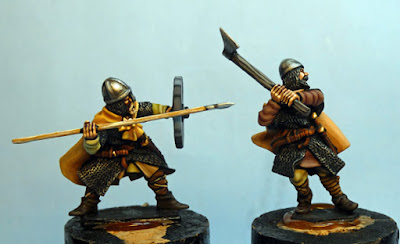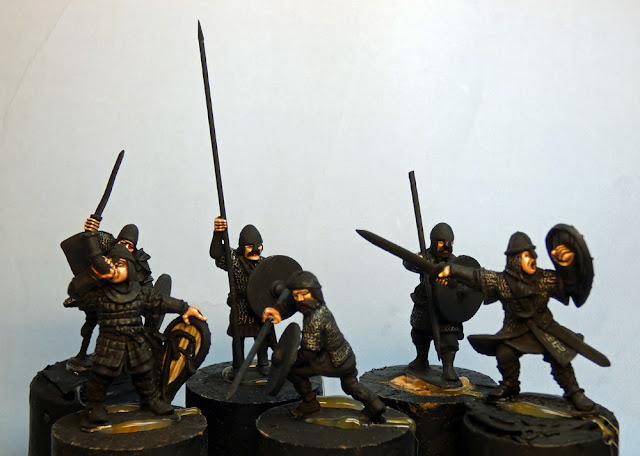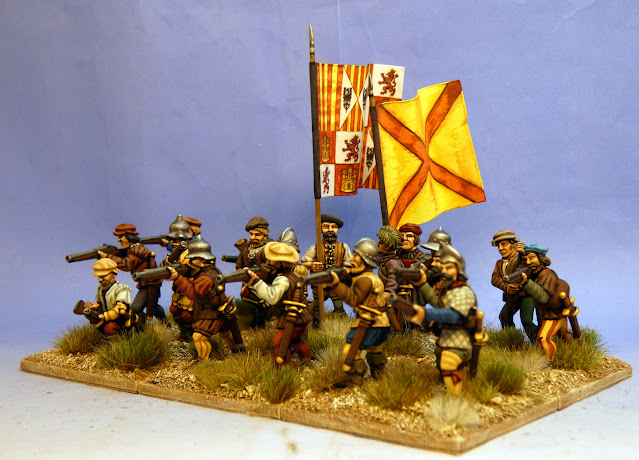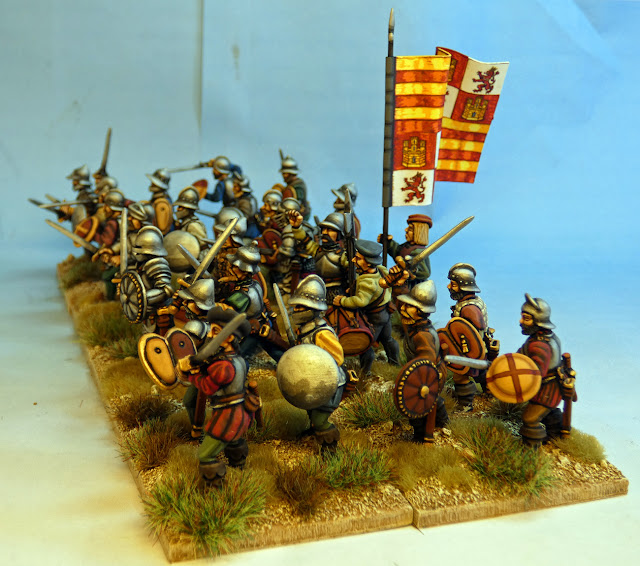Wednesday 27 April 2022
More Anglo Danes!
Sunday 24 April 2022
Anglo Danes/I'm back!
Some how, somewhere I have managed to find the strength to start getting back into my painting. As I have mentioned before I am battling real demons in terms of mental health and it is no exaggeration that it took a heck of a lot of effort and determination to pick up the brushes again!
This post is both a small celebration and a reminder that it can be done. Are the miniatures painted to the exact same standard as the last unit of Anglo Danes I managed to paint up? Probably not. I am still feeling a little tentative with my brush work to add borders to the tunics and shirts but that will come back with a little time. I have left these unvarnished for now as I'm hoping, as I get back my confidence with the brush I will be able to add patters to the borders with my usual skill.
For now though, I'm back and happy top be so! As per, all the images are "clickable" should you wish to enlarge.
Sunday 10 April 2022
Painting Yellows How To (Updated 16-04-2022)
I recently explained my method of which manufacturer and the specific colours I was using to get the particular yellow on the Spanish Arquebusiers above and was politely informed I must not be using Vallejo Model Colour, which I was(!), and that I must be using Army Painter paints, which I was not! I thought that this one needed to be tucked into bed so decided to do a quick post.
Note, this is but one hue or yellow and there are obviously many other ways of reaching a similar or indeed, a very different goal. Many ways of adding shade to a "yellow", such as applying a complimentary colour like a "violet" but these methods are largely based on colour theory that was developed for paintings on canvas, board or for use in Graphic Design etc. and not for the 28mm miniatures that we want to get on the wargames table. Not that I would ever discourage anyone from experimenting. Colour theory has it's place, on single pieces or pieces aimed at competition painting but, in my humble opinion, not for the purpose at hand, getting them on the table ship shape and Bristol fashion.
Of course, it is possible to start a "yellow" from a lighter or darker base of any suitable colour, I have used Ochres, Light browns, Dark Browns to different effect a myriad of different models. I usually avoid the obvious trap of going to an Orange base for the "yellow". This is fine for many layers and blending (mostly on larger models) but not very useful for the four or five layers I usually aim for. Here a degree of compromise and an acceptance that there will be a higher degree of contrast between the original tone and the final highlights are key.
Whilst I type this, I think a disclaimer of sorts is important. I think is necessary to stress that we all have different ways of applying and mixing paint different ways of going about things with the brush. This small article as a means to answering a question I have been asked many times on the internet on many fora, "How do you go about painting yellows?". There is no right or wrong way of going about this but hopefully this little article will go someway to explaining how I go about the business of painting yellows. Many might disagree with my simple method, which is fine.
The actual method to create this type of "Yellow" is pretty simple. I start with Vallejo Model Colour Orange Brown and simply mix in a gradual succession of Vallejo Model Colour Light Yellow until I have a final highlight of VMC Light Yellow sometimes with added VMC Off White. I tend to avoid using VMC Matt White wherever possible as like most "modern" synthetic acrylic white, the pigment is unnaturally stark and bright. In my Art College days I much preferred to use an understated Lead White to the comparatively stark Titanium White. The difference is very noticeable on a canvas, perhaps less so on a 28mm miniature but, to my eyes at least, still very marked. Vallejo Model Colour Ivory is as close as I'm going to get in equivalence of an oil paint Lead White.
The method of creating a "yellow" has been used used on the crew of the Early Byzantine Torsion Engine and the turban of the chap holding his sword aloft on the Malalai of Maiwand vignette below:

























































.jpg)








































